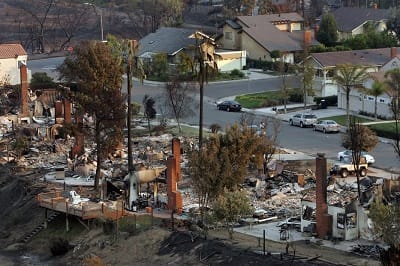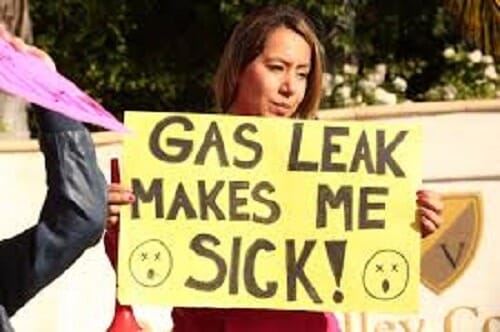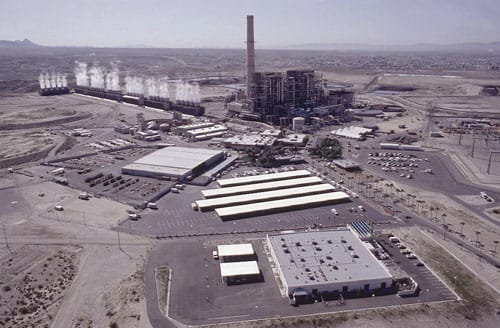The Global and Local Impact of California's Utilities


Currently, the majority of Californians are dependent on utilities in order to meet their electricity needs. Without functioning utilities, the lives we lead would be impossible and if utilities ceased to exist tomorrow, it is likely chaos would ensue.
No one is more aware of this fact than the utilities themselves. They have used our reliance on them to pursue their objective of profiting at the expense of our environment, our personal finances and the health and safety of our communities. As long as we continue to be dependent on the utilities to deliver our energy and ultimately our quality of life, they will continue to use this to the detriment of our community and future generations.
 San Diego Gas & Electric
San Diego Gas & Electric
The largest utilities in the state of California are Pacific Gas and Electric (PG&E), Southern California Edison (SC&E), San Diego Gas and Electric (SDG&E) which is operated by Sempra Energy and SoCalGas, the Los Angeles Department of Water and Power (LADWP) and the Sacramento Municipal Utility District (SMUD). Over the past century, these utilities have undoubtedly supported the growth of California to become one of the most desirable regions in the world to live, work and support a family.
 Southern California Edison
Southern California Edison
However, as the energy industry evolves with the development of alternative energy technologies and the desire of people and communities to gain energy independence, these utilities have engaged in acts that have threatened the very well-being of our communities. These acts, arguably deliberate, negligent and criminal, have had the sole objective of preserving the extortionate salaries of executives and the profits of their utilities' stakeholders.
If we are not vigilant, utilities will continue in dishonest and fraudulent efforts to protect their monopoly. As a result of our inaction, they will continue to destroy our local environment, damage our economy and most distressingly put the lives of Californians at risk.
This article will outline the facts on how the Investor-Owned Utilities are:
California utilities generate the vast majority of their electricity using fossil fuels. For example, 67% of SDG&E’s electricity is generated using natural gas. Our dependence on fossil fuels, in addition to the tensions between the corporations and countries that control this commodity, has fueled global conflict over the past century. This is no surprise, as the United States is the second highest importer of natural gas in the world. Each year, we import 88,770,002,944 cubic meters of natural gas. This highlights our growing dependence of imported fossil fuels, which has resulted in billions of dollars leaving our economy, impacting our national security and having disastrous environmental and health consequences.
The natural gas market is comprised of volatile nations which typically do not consider the interests of the U.S. in their decision making. SDG&E’s parent company, Sempra, is based in San Diego with annual revenues exceeding $10.5 billion. The company announced just last year that it was developing a liquefied natural gas (LNG) facility near Ensenada, Mexico. This facility will process natural gas, which is transported through pipelines to the U.S. and used to produce electricity at power plants.
Sempra sources its natural gas for the facility from Qatar Gas, among others, which utilities then use to power homes and businesses across California. This is highly problematic for our national security as the money that is used to pay for our electricity bills is being used to ultimately fund violent extremism in the Middle East.
Qatar has been identified as a prime sponsor of violent Islamists, including groups linked to Hamas, al-Qaeda and Isil. Qatar has deliberately channeled guns and cash towards Islamist rebels, which has been funded by their large reserves of gas and oil being purchased by utility suppliers such as Sempra.
In addition, the two highest exporters of natural gas in the market are Russia and the Arab League, which includes Iran, Qatar, Saudi Arabia and Algeria. The demand of industrial nations for natural gas is expected to exceed supply and system capacity, leading to a dramatic and permanent increase in the cost of gas, meaning that the U.S. economy will suffer unless alternative sources of energy generation are embraced.

The effect of utilities on our communities is not just long term and global. Actions by our utilities are resulting in immediate and local catastrophic impacts on our communities. The utilities supplying California have caused irreparable harm to our community from widespread blackouts, massive bush fires, gas explosions and massive gas leaks.
Utilities have demonstrated their ineffectiveness in delivering safe, reliable and affordable electricity to their customers time after time. This has been particularly relevant since the Californian Energy Crisis, which preceded fatal incidents both in 2007 and 2010. However, this culture of ineptitude has predated the energy crisis and has manifested itself over the past three decades.
In 1986, SDG&E hired a CPUC attorney as a lobbyist, despite the obvious conflict of the role considering that the CPUC is designated to regulate SDG&E. The CPUC attorney had worked on the legislative elements of the San Onofre Nuclear Generating Station development with the CPUC, therefore SDG&E was at the very least inadvertently tampering with the facility’s development process.
In 1987, the California Public Utilities Commission announced that SDG&E needlessly boosted its rates in the late 1970s by buying “expensive” electricity from three companies in New Mexico and Arizona. The CPUC identified that despite several opportunities for SDG&E to negotiate lower-cost contracts with the companies, they failed to do so, highlighting how SDG&E did not have the best interest of their customers at heart.
In 1993, PG&E made the decision to no longer update maps known as “pipeline plat sheets,” as they were deemed to be no longer important. However, this resulted in a lack of information for PG&E crews and contributed to multiple failures in the utility pipelines in the future, such as the 2008 Rancho Cordova gas line blast and the 2010 San Bruno Pipeline Explosion.
 Pacific Gas and Electric Company
Pacific Gas and Electric Company
In 1997, PG&E was subject to criminal convictions due to its negligence which caused the devastating 1994 wildfire in the Sierra Mountains. PG&E was convicted of 739 counts of criminal negligence for failing to trim trees near its power lines, the largest criminal conviction ever against the state's largest utility. During the three-month trial, a prosecution expert testified that PG&E bilked its customers of nearly $80 million by diverting funds from its trimming program into shareholder profits.
In December 1998, more than two million San Francisco area residents were left without power, stranding train commuters, stalling trolleys and electric buses in the streets and forcing businesses, some schools and the Pacific Stock Exchange to shut down. Investigations found that this power outage was due to human error as a consequence of inadequate training of PG&E crews and the incident resulted in economic costs of tens of millions of dollars.
In 2000, SDG&E improperly removed asbestos from the Encanto Gas Holder Station in Lemon Grove, jeopardizing the health and safety of the local community. The Air Pollution Control District sent a violation notice to Sempra following the incident, where it emerged that officials from the federal Environmental Protection Agency described the scene as the worst they had witnessed.
More recently these failures have increased in both frequency and severity, resulting in severe impacts that continue to affect the communities and regions where they occurred.
On an extremely hot day - May 22, 2000 - the California Independent System Operator (ISO), which manages the California power grid, declared the first Stage 2 power alert, when heavy usage contributed to power reserves dropping to five percent. This was the beginning of the Californian Energy Crisis, a period which resulted in disarray for the ordinary energy consumers reliant on vulnerable and insecure utilities for their energy needs.
The state suffered from multiple large-scale blackouts which had negative implications for businesses who were reliant on a secure energy supply and had serious consequences for households and communities across the state.
One of the major causes of the crisis was due to market manipulation. The utilities reduced their production and shut down power plants in order to reduce supply and drive up the price of electricity which the utilities purchased. This manipulation was possible because of legislative changes focused on deregulation in 1996, which the utilities had themselves successfully lobbied for.
After January 2001, the credit ratings of Southern California Edison and Pacific Gas & Electric utilities were downgraded to junk status. Announcing that it was $8.9 billion in debt, on April 6, 2001, Pacific Gas & Electric filed for Chapter 11 protection under bankruptcy laws. The CPUC unanimously approved a 40 percent rate increase for SCE and PG&E customers in an attempt to reduce the impact on the utilities from the high wholesale electricity costs. A desire for Californians to gain their energy independence was beginning to emerge and the California Energy Commission’s Emerging Renewables Program was launched by the state Legislature.
 San Diego County homes burned to the ground in the 2007
San Diego County homes burned to the ground in the 2007 On October 21, 2007, the Witch Fire was sparked by fallen San Diego Gas & Electric power lines in rural East San Diego County. That fire later merged with another blaze, the Guejito Fire, killing two people, charring tens of thousands of acres and destroying 1300 homes which burned down.
State investigators and a California Fire report found that SDG&E's power lines were largely responsible for sparking the catastrophic damage. SDG&E admitted to obstructing investigators before they confessed that the fire was caused by their negligent maintenance of the lines. This resulted in the utility paying the state $14 million to settle negligent maintenance allegations. SDG&E faced 2,500 lawsuits related to the 2007 fires and $4 billion in claims, but the company settled most of them at a cost of $2.4 billion.
Despite admitting their own guilt, SDG&E wanted its ratepayers to bear 95 percent of its losses from the 2007 wildfires. In December 2012, the CPUC denied a request from the company to retroactively impose a rate hike of nearly half a billion dollars to cover the cost of power-line caused fires in 2007. In 2015, SDG&E asked the CPUC to approve a new electricity rate hike that would ask customers to pay almost $380 million in settlement fees associated with the 2007 wildfires. Not only was the utility responsible for the loss of lives and for destroying hundreds of homes they wanted electricity customers to pay for their fatal incompetence. They wanted the public to bear a cost they shouldn’t had to bear so that the utilities wealthy shareholders could be free from any costs because of their negligence. The CPUC are likely to issue their final decision by the first quarter of 2017.
 A home engulfed in flames from a PG&E natural gas pipeline explosion
A home engulfed in flames from a PG&E natural gas pipeline explosion
On September 9, 2010 in the Northern California community of San Bruno, eight people lost their lives following the explosion of a PG&E natural gas pipeline. This tragedy resulted in an eruption of flames more than 1,000 feet high, which engulfed the community. The intensity of the explosion led many to believe that it was an earthquake or an airline crash, while it took over an hour before the crews could determine the cause of the explosion.
The devastation which ensued was a consequence of a utility determined to preserve profits with the explosion a result of a number of irresponsible decisions. During the investigation, a number of defects were found on the pipeline as a result of negligent maintenance, as PG&E continued to ramp up the gas pressure in the aging pipes to meet demand the pipeline completely failed. It was later revealed that PG&E had stopped pipeline replacements just short of the San Bruno community and had also failed to conduct expensive tests. PG&E then obstructed the federal investigation into the blast, according to the office of U.S. Attorney Brian Stretch. An independent audit from the State of California found that PG&E had illegally shifted more than $100 million from an account designated for safety operations to pay for executive compensation and bonuses. Yet, to this day PG&E continue to deflect their responsibility and continue to go through the courts fighting those who seek justice for the destruction of the San Bruno community. PG&E’s lobby team have focused on averting any public relations or regulatory backlash as a result of the fatal explosion. Just this August, Federal prosecutors quietly filed court papers that may save the utility company from paying $562 million in fines and instead will see them subject to a trivial fine of $6 million.
 Porter Ranch Protestor
Porter Ranch Protestor
On October 23, 2015 the worst natural gas leak in the history of the U.S. occurred at the Aliso Canyon Gas Storage Facility sparking 4 months of incessant gas leaks and triggering a state of emergency in California. During this period almost 100,000 tons of methane, with a global warming potential 86 times greater than carbon dioxide, were released into the local community. The devastating impact resulted in the relocation of over 8,000 Porter Ranch residents while schools had to temporarily close due to the negative consequences associated with the leaks.
Despite SoCalGas, a Sempra Energy Utility, claiming that the leak posed no threat to nearby residents, hundreds of residents in the Porter Ranch community fell ill with coughing, fatigue, and dizziness. In particular the leak impacted on children in local schools who could not go outside and often suffered from disorientation and nosebleeds. Despite the obvious impact the utility failed to report the gas leak immediately leaving residents of the community subject to the effects of the leak without the information to act in their own interests. SoCalGas is now subject to numerous criminal charges and civil lawsuits brought by the states attorney general as a result of the incident. In addition, residents of the surrounding area have filled over 1,000 lawsuits in response to the damages that they suffered. The damage cannot be undone and the impact of the gas leak may continue to have repercussions for the wider communities of the region and for future generations, highlighting the high risk potential of natural gas.
Previous regulations stated that utility projects had to be “used and useful” before customers were to bear the costs of through rate increases. This meant that utilities could not charge customers until their projects were proven to deliver benefits. Since 2002, however, changes in regulations allow utilities to charge customers even before the projects are completed, meaning that utilities are now free to invest in bad projects without impact to their profits. This has resulted time and time again in utilities spending billions of dollars on projects which have failed, the cost of which has then been consistently borne by the ratepayers who are subject to increasing costs for their power.
 Citizens protesting the San Onofre Nuclear Generating Station
Citizens protesting the San Onofre Nuclear Generating Station
The closure of the San Onofre Nuclear Generating Station (SONGS), collectively run by SCE and SDG&E, was announced in June 2013. Prior to SONGS being shuttered, the utilities had mislead regulators regarding the leaking radiation from the steam generators which had recently been replaced at a cost of $680m. An investigation into the leaks found that SCE executives were aware there was a potential issue with the generating station but chose to ignore it, despite the fact the facility was located within close proximity to over seven million Californians. In order to reduce the financial impact to the utility SCE decided to increase the electricity rates of their customers, this rate increased was approved by the CPUC. Rather than accept responsibility and absorb the cost of their failed project SCE charged their customers costs more than $3.3 billion in rate increases. Evidence later emerged that secret meetings were held in Poland in March 2013 between SCE’s vice president Stephen Pickette and CPUC president Michael Peevey. Those sessions were deemed ex parte communications in violation of the law requiring such discussions to be conducted publicly. The commission fined Edison $16.7 million for failing to disclose those behind-closed-doors talks.
Those who remain with the utilities are not fairly protected from these inevitable and appalling investments as utilities receive a guaranteed return on their investment, meaning that the more executives spend, the more they get paid – regardless of the quality of the investment. Utilities make their money by building new and large scale energy generation infrastructure and then pass the cost onto ratepayers. This is why utilities want to eliminate the opportunity for homeowners to generate their own energy. New projects are a way for utilities to bolster their revenue because they collect as much as 11% of a project’s cost. This results in billions of dollars of expenditure by utilities in order to ensure that revenue targets are reached. This concept was best explained by former president of the CPUC Loretta Lynch who outlined that utilities “…have to keep feeding the beast to make their profit.”
 Mohave Generating Station
Mohave Generating Station
Acts of utility incompetence are systematically occurring as executives continue to spend huge amounts of ratepayer’s finances on projects which do not benefit them. As recently reported:
Despite the fundamental failures of our utilities to deliver electricity to their customers cost effectively and safely the executive boards of the state utilities and their parent companies continue to receive extortionate salaries and compensation. Rather than have shareholders and executives bear the costs of failed projects these costs have been unfairly substantially borne by customers with no impact on the salaries of utility executives.
 Debra Reed, Sempra
Debra Reed, Sempra
 Mark Snell, Sempra
Mark Snell, Sempra
 Ted Craver, SCE
Ted Craver, SCE
The inflated salaries of California utility executives is set to continue into future as utility investors can recover substantially all their costs — including much of executive payroll — from consumers. There’s relatively little incentive for shareholders to restrain pay resulting in certainty that consumers will be subject to higher rates in the future as compensation continues to increase.
Utilities excessive profits, extortionate pay and illegitimate relationship with regulators should be a concern for everyone. Continued pay at this level despite failing their customers is fundamental cause for utility unaccountability and will only get worse as executives compensation continues to be separated from the safety and quality performance of their service to their customers.
Despite the obvious failure of utilities to deliver electricity to its customers in a cost effective manner that is above all safe they continue to spend millions of dollars in their attempt to influence legislation. The California State Capitol is bombarded with the lobbying efforts of utilities and in just 2015 the three largest utilities spent over $3 million influencing legislation. This has been used to fuel opposition to sustainable energy in order to suppress the threat that this presents to the utilities monopoly structure.
Despite the attempts of utilities to sway elected officials to prop up the fossil fuel industry at the expense of the solar industry, the legislature has remained steadfastly committed to customer sited solar power. Fortunately for Californians, our state government’s policies have resulted in more solar jobs and more solar power systems in the State than any other state, and a GDP that dwarfs Texas.
The utilities attempts to thwart competition is not new. Utilities have a history of preventing the future growth of emerging technologies. This was evident back in the 1980’s with the development of the cogeneration industry which was producing both electricity and heat at onsite independently owned generating facilities, similar to solar power in the present day. Cogeneration represented a more efficient, cheap and sustainable method of generating power for large energy consumers, during a time of substantial rate increases at SDG&E. This technology was embraced by the Navy, General Dynamics, Convair and the Union-Tribune.
This industry also presented competition to the utilities who were determined to prevent the growth of the industry claiming that they would have to increase electricity rates because of a loss in their profitability. Utilities successfully dismantled the growth of cogeneration using the very same deceitful tactics that they currently use against the solar industry. SDG&E claimed that they wanted to join in the increasingly competitive cogeneration market, yet raised backup rates that increased the cost of co-generating to uncompetitive levels. SDG&E lobbied the Public Utilities Commission and federal agencies to decrease payments to private generators who hoped to sell electricity to the utility. These factors ultimately destroyed the cogeneration industry with utilities continuing to use the very same playbook in their attempts to undermine the solar industry.
Utilities efforts to destabilize the solar energy industry have largely focused on increasing the barriers for those who want to become energy independent. Through improved public policies, such as cutting red tape and streamlining permitting and interconnection processes, costs of generating your own clean energy could be lowered dramatically, however utilities have been determined to make the process as difficult as possible.
The Edison Electric Institute, a national advocacy group representing America's investor-owned utilities, has been at the forefront of supporting utilities in their attempts to minimize competition in the energy industry. The institute went so far as to develop a report identifying rooftop solar as a threat to the electric utilities’ profits and its business model. This report was followed by a series of corporate goals for 2016 which highlighted the need for utilities to push for the end of net metering and with it remove the opportunity for energy consumers to gain their own energy independence.
 Edison Electric Institute
Edison Electric Institute
Utilities have engaged in even more underhanded measures to remove the threat of solar. Despite the fact that solar benefits both solar and non-solar customers from all backgrounds, utilities have campaigned in lower income areas spreading falsehoods about solar energy’s impact on these communities. Edison Electric Institute has financed minority groups to the tune of $160,000 in 2012 and 2013, with these groups passing legislation almost identical to that proposed by utilities. Despite the multiple benefits of solar for communities of color as highlighted by the NAACP, utilities continue to engage in false claims that solar power is a detriment to these communities. The facts are that solar power remains not only a means of generating affordable and sustainable electricity but that it creates local rewarding careers across all communities. As outlined, utilities are launching campaigns based on deception and backroom deals to try to end competition in the form of solar power.
In 2011, SDG&E submitted a filing with the CPUC requesting to change the rate structure and charge solar producers for using the utility’s power lines to transport electricity - called a “network use charge”. This measure ultimately could have charged solar producers for delivering energy to the grid - which the utility would then go on to charge other energy consumers for – potentially doubling their profit potential. This proposal, founded upon the utilities motives to decimate the solar industry, was shot down by the CPUC as it was deemed to be inconsistent with the current law. If this had passed in San Diego it was likely that PG&E and SCE would have followed suit, destroying California's clean energy industries.
Most recently San Diego Gas & Electric have requested to set up an independent marketing division that could lobby against local communities in their efforts to secure a sustainable energy future through renewable energy sources. This has widely been seen as an attempt to maintain the public’s reliance on fossil fuels and to ensure that the utilities profits are maintained.
On March 8, SDG&E and SCE filed a request asking for a re-hearing from the California Public Utilities Commission, proposing specific modifications to the new net metering program, attempting to increase the costs for those who hoped to go solar. Rather than embrace new technologies utilities have been using their customer’s money to fund this legal battle in order to defend its monopoly from competition.
Utilities falsely claim that supporting emerging technologies will result in negative economic implications and could result in the loss of jobs in the energy sector. However California employs more solar workers than the state’s 5 largest utilities combined. In 2015 these utilities employed 49,407, while the solar energy industry was responsible for the employment of 75,598 people from diverse backgrounds across the state. The solar industry is putting Californians to work throughout the state, from San Francisco to San Diego, yet the utilities have been determined to reduce the job creation potential of this sector.
Utilities have been determined to outline that solar presents additional costs to those who have not gone solar. They claim that the costs of paying solar energy customers for the electricity they produce is resulting in an unfair impact on ratepayers who have not gone solar. This fact was demonstrated in the final report of highly respected CPUC Commissioner Mark J. Ferron before his resignation due to illness where he stated that utilities “…would still dearly like to strangle rooftop solar if they could”.
Following the passage of AB327 in 2013 responsibility was given to the CPUC to establish net metering rules for solar. This move was likened to a ‘poison chalice’ Commissioner Ferron where he stated that;
“Fortunately, or maybe unfortunately, with the passage of AB327, the thorny issue of Net Energy Metering and rate design has been given over to the CPUC. But recognize that this is a poisoned chalice: the Commission will come under intense pressure to use this authority to protect the interest of the utilities over those of consumers and potential self-generators, all in the name of addressing exaggerated concerns about grid stability, cost and fairness. You – my fellow Commissioners - all must be bold and forthright in defending and strengthening our state’s commitment to clean and distributed energy generation.”
Independent studies have found that supporting rooftop solar is not a net cost, in fact it is a net benefit - for the utility and for non-solar ratepayers. The economic benefits of supporting solar energy actually outweigh the costs and impose no significant cost increase for non-solar customers. A 2013 report from Vermont’s Public Service Department outlined that net-metered solar customers do not impose a significant cost to non-solar customers. In contrast to the utilities’ claims that net metering unfairly supports solar customers is a 2014 report from Minnesota’s PUC, which concluded that net metering undervalued rooftop solar.
Despite arguments from utilities that solar energy represents an unfair burden, solar energy supports cost savings and improved performance for the utility. With the significant increase in solar energy utilities can avoid expensive requirements to increase power plant capacity. In addition, solar energy reduces wear and tear on the electric grid, power lines and power plants and reduces environmental compliance costs for the utility, when these are factored in it becomes obvious that solar is an undervalued technology.
But why then would utilities so vehemently fight the solar energy revolution when it not only benefits the utilities service and utilities customers? Analysis by Lawrence Berkeley National Lab sheds some light on this. Their research highlighted that while the growing use of solar generation will have no significant impact on ratepayers - it may decrease utility shareholder and executive earnings. Having had some insight into the pay structure of the utilities who are paid compensation based on the satisfaction of their shareholders rather than on the satisfaction of their customers it comes as no surprise that they are in a constant battle against the emergence of solar energy.
Despite the best efforts of utilities to prevent the growth of the solar industry, they have ultimately failed. The solar energy revolution is happening right now. Between 2014 and 2015, residential solar installations increased by 66 percent. This growth is set to continue this year and into the future as the costs of solar decrease while electricity rates rise. Households across the state are eliminating their electricity bill - in turn saving money and delivering safe and sustainable energy to their home.
It is not only the financial benefits that are motivating the switch to solar. Communities are seeking energy independence as they become more aware of the incompetence and perverse motives of the utility and its executives in safeguarding revenues and profits at the expense of safety. Innocent lives have been lost because of utilities ineptitude, while thousands of families have become ill and have had to relocate because of relentless failures. Utility shareholders have not been subject to the pain that these incidents have caused, instead they continue to benefit from windfall profits year on year. When incidents happen that cause catastrophic damage, utilities shift the cost from their shareholders onto their customers in the form of increasing rates.
Utilities will continue to source electricity from our political and social adversaries resulting in billions of dollars consistently leaving our nation. Rather than embracing local and safe forms of energy generation, utilities have been focused on undermining solar energy and those who have become solar advocates by spending millions lobbying elected officials and regulators.
As mentioned, the energy that utilities have provided us over the past century has supported California in becoming one of the most desirable regions in the world. But in the past two decades it has become evident that sourcing our energy in this manner has been at the cost of our communities, environment and economy. The facts presented here highlight that the way we generate our energy must change, we cannot continue to support corrupt utilities motivated to deliver profits at the expense of safe and secure energy to our homes and communities. While utilities are desperate to prevent emerging technologies such as solar from developing to their potential the solar revolution is inevitable. Utilities longing for profit will not be enough to suppress California’s desire for clean, safe and secure energy.
As we have for the past 12 years, Sullivan Solar Power will continue to provide Californians the means to declare independence from these monopolies while simultaneously freeing ourselves from the imported fossil fuels these utilities force upon us. The time for a full scale solar energy revolution is upon us.